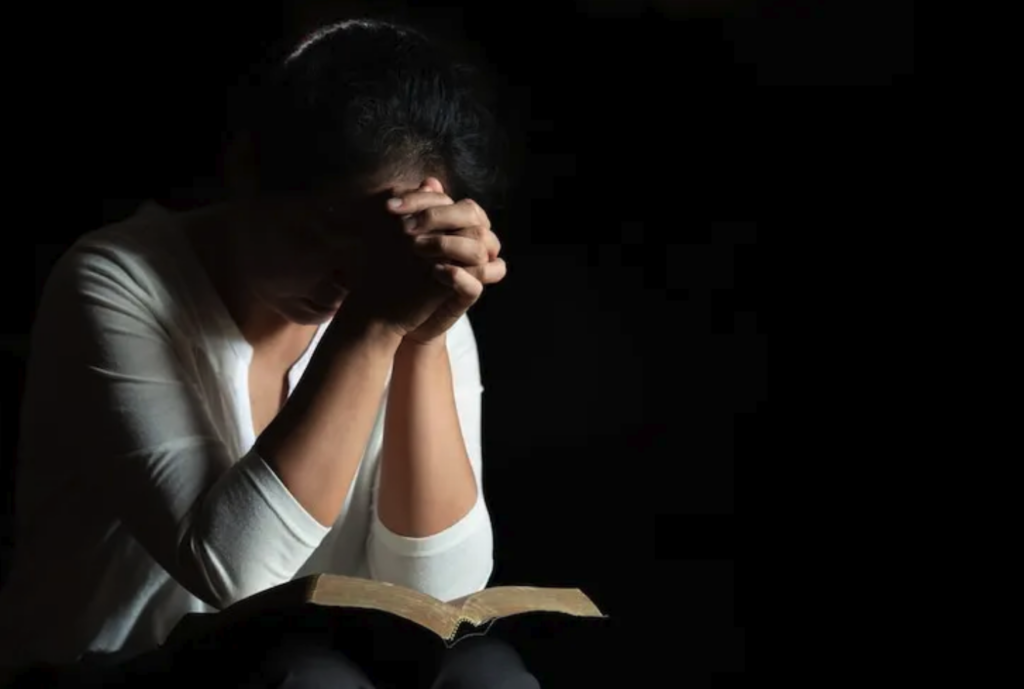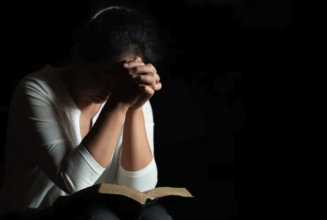 Reading Time: 8 minutes
Reading Time: 8 minutesOver the last half century or so, it has become increasingly common for people in the western world to adapt and adopt traditional spiritual practices from around the world, particularly the east, into their personal daily practices and search for greater meaning in life.
From meditation to mantras to pilgrimages and more, many have seen the value of creating a personalized ritual space and practice drawn from age old wisdom from around the world.

Rarely, however, do people from a non-religious background look to incorporate practices from the more Western Judeo-Christian religions. Perhaps simply out of a sense that the spiritual world they grew up in hasn’t worked for them they ignore or are even suspicious of what they have to offer.
However, just like the world religions and spiritual systems that so many draw rituals from, the more traditional Western religions may have something to offer, even for non-religious, even agnostic or atheistic individuals.
Prayer: Whats in it for me?
In a world buzzing with notifications, deadlines, and endless choices, finding a moment of calm and clarity feels like a radical act. For centuries, traditional Christian prayer has offered believers a way to pause, reflect, and align with something greater than themselves.
But what if you don’t believe in God? Can the essence of prayer—a practice rooted in surrender, structure, and connection—still hold value for the non-religious? Absolutely. By removing the theological scaffolding, non-religious individuals can adopt prayer-like practices that foster emotional resilience, mental clarity, and a sense of purpose, all without needing faith in God.
Here’s how the core elements of traditional Christian prayer can inspire a secular practice that’s both grounding and transformative.
The Heart of Traditional Prayer: Beyond Belief

At its core, traditional Christian prayer is as much about reorienting oneself as it is about petitioning God. The Lord’s Prayer, or the Our Father, for instance, includes the line “Thy will be done,” which encapsulates a posture of surrender—not just to God, but to the reality of what is beyond one’s control.
Christians pray to align their own desires with a divine plan, to find peace in uncertainty, and to cultivate humility. This act of letting go, coupled with structured reflection, creates a powerful framework that doesn’t require belief in God to be effective.
For non-religious people, this framework can be reimagined as a way to connect with a larger reality—whether that’s the universe, the flow of life, or simply the present moment. The benefits of such a practice are backed by science: studies, like those from the Greater Good Science Center, show that reflective practices reduce stress by activating the parasympathetic nervous system, while structured rituals improve focus and emotional regulation.
Let’s explore three key elements of traditional prayer—surrender, structure, and communal connection—and how they can be adapted for a secular life.
1. Surrender: Letting Go of Control
One of the most profound aspects of prayer is its emphasis on submitting to God’s will. In the Garden of Gethsemane, before his crucifixion, Jesus prays, “Not my will, but yours be done,” embodying a willingness to release personal desires in favor of a larger plan.
For believers, this surrender is about trusting God’s wisdom. But for the non-religious, surrender can emphasize accepting the limits of personal control in a complex, unpredictable world.

Life is full of variables we can’t dictate—traffic jams, health setbacks, or global crises. Constantly fighting these realities breeds anxiety. A secular prayer-like practice can involve pausing to acknowledge what’s beyond your control and choosing to focus on what you can influence, like your response or attitude. This isn’t resignation; it’s a deliberate act of release that fosters peace.
How to Practice Secular Surrender:
Find a quiet moment each day—perhaps in the morning or before bed—and sit in silence for 5 minutes. Reflect on something weighing on you, like a work conflict or a personal worry. Acknowledge its complexity and your limited control over the outcome.
Then, mentally or aloud, say something like, “I release my need to fix this. I’ll do my part and let the rest unfold.” This mirrors the act of entrusting outcomes to God, but here, you’re entrusting them to life’s natural flow.
Over time, this practice can reduce anxiety, as it trains your brain to let go of futile mental loops. Research shows that acceptance-based practices lower cortisol levels, offering a tangible benefit.
2. Structure: Creating a Ritual for Clarity
Christian prayer often follows a structure, whether it’s the repetitive cadence of the Rosary, the daily rhythm of the Liturgy, or the guided steps of the Ignatian Examen. This structure isn’t just habit—it’s a container for focus, transforming scattered thoughts into a coherent act of meaning.

For non-religious people, a structured ritual can serve the same purpose: carving out a space to process emotions and regain perspective.
Without structure, our minds can spiral into distraction or rumination. A prayer-like practice offers a predictable anchor, much like a workout routine disciplines the body. It signals to the brain that it’s time to slow down and engage deeply, creating what psychologists call a “flow state” conducive to clarity.
How to Build a Secular Ritual:
Design a 10-minute daily practice with a clear beginning, middle, and end. For example:
-
Start: Light a candle or take three deep breaths to mark the moment.
-
Middle: Reflect on a question, like “What’s driving my stress today?” or “What matters most right now?” Write or think through your answer, letting thoughts flow without judgment.
-
End: Close by summarizing one petition or request, like “Allow approach today with patience,” and blow out the candle or take a final breath.
This mirrors the Christian Examen’s structure of reviewing the day to discern God’s presence, but here, you’re discerning your own priorities as they align with a larger plan. The ritual’s consistency—same time, same place—builds a habit that, per habit-formation research, becomes automatic after about 2 months, enhancing mental discipline and calm.
3. Communal Connection: Finding Meaning Beyond the Self
Christian prayer often extends beyond the individual, whether through intercessory prayers for others or communal worship. This outward focus fosters a sense of connection to something larger, countering isolation and self-absorption.
For non-religious people, a prayer-like practice can similarly shift attention outward, cultivating empathy and a sense of belonging to humanity or the world.

In 2025, with social disconnection on the rise—studies report 1 in 4 adults feel chronically lonely—a practice that connects you to others, even in thought, is powerful. It doesn’t require a church or a deity; it requires only the intention to see yourself as part of a larger whole.
How to Practice Secular Connection:
Once a week, dedicate a few minutes to a reflective exercise focused on others. Sit quietly and bring to mind someone in your life—a friend, coworker, or even a stranger you encountered. Consider their struggles or joys, and silently wish them well, perhaps thinking, “May they find peace today.”
Alternatively, reflect on a broader issue, like those suffering from war or your own community needs, and ask, “How can I contribute, however small?” This echoes intercessory prayer’s focus on others’ welfare but grounds it in human solidarity.
Studies on compassion meditation show that such practices increase oxytocin and reduce feelings of isolation, reinforcing their value.
Why This Matters for Non-Religious People
Adopting a prayer-like practice doesn’t mean mimicking or practicing religion—it means borrowing a time-tested framework to navigate modern life’s chaos. Just as meditating doesn’t make you a Buddhist, finding meaning in a prayer practice doesn’t make you a Christian if that’s not your intent. The non-religious often crave meaning but reject dogmatic or traditional structures.
A secular practice inspired by traditional prayer offers a balance of both worlds: the depth of a spiritual discipline without the need for belief. It’s a way to pause, reframe, and reconnect in a world that rarely slows down.
The benefits are both practical and profound. Surrendering control reduces the mental burden of overthinking, as seen in acceptance-based therapies like ACT (Acceptance and Commitment Therapy).
Structured rituals enhance focus and emotional regulation, per neuroscience research on habit formation. And focusing on others fosters empathy, countering the individualism that fuels disconnection. Together, these elements create a practice that’s grounding, purposeful, and adaptable to any worldview.
Getting Started: A Simple Secular Prayer Practice
Ready to try it? Here’s a beginner-friendly 10-minute daily practice that blends surrender, structure, and connection, no belief required:
-
Set the Scene (1 min): Find a quiet spot. Sit comfortably, close your eyes, and take five slow breaths to center yourself.
-
Surrender (3 min): Think of something weighing on you. Acknowledge it and your limited control over it. Silently say, “I can’t control this, but I can accept it and choose how I respond.” Feel the release.
-
Reflect (4 min): Ask yourself, “What’s most important today?” Jot down or think through your answer, noting any emotions or insights.
-
Connect (2 min): Picture someone in your life or a broader cause. Wish them well or consider a small way to contribute, like sending a kind text later.
-
Close: Take a final deep breath and say, “I’m ready for today.”
Do this daily for a week, ideally at the same time, and notice how it shifts your perspective. You might feel calmer, more focused, or simply more present—outcomes Christians attribute to prayer, but which are universally human.
Final Thoughts
Traditional Christian prayer has endured because it speaks to universal needs: to make sense of chaos, to find purpose, to feel connected. Non-religious people can tap into this wisdom by creating a prayer-like practice that honors surrender, structure, and communal connection.
It doesn’t have to be about God for you—it can simply about reclaiming a space for meaning in a distracted world. In 2025, as we navigate uncertainty and overload, this adaptation of prayer might just be the ritual that carries you through.
So, carve out a few minutes, breathe, and see what happens when you pause to align with that which is greater than yourself.











